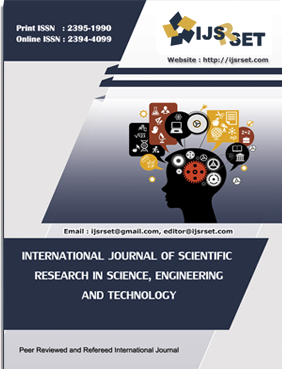Implications and Challenges of GIS in Geological Exploration
Keywords:
GIS, Remote Sensing, Geological ExplorationAbstract
Geographical Information Systems (GIS) have become indispensable tools in geological exploration, transforming how geologists analyze and visualize spatial data. By integrating geological, geophysical, and geochemical information, GIS enables more efficient resource mapping, environmental monitoring, and hazard assessment. Its application in mineral exploration allows for the precise identification of potential resource deposits and the mapping of geological structures, significantly improving the accuracy and speed of exploration efforts. In addition, GIS plays a crucial role in assessing geohazards, such as landslides, earthquakes, and volcanic activity, helping geologists mitigate risks and make informed decisions. The use of GIS in geological exploration is not without challenges. Issues such as data accuracy, integration difficulties, and the high costs associated with GIS technology can pose significant barriers. There is a need for specialized training in GIS software and techniques to fully capitalize on its potential. Despite these challenges, GIS continues to offer tremendous advantages, such as cost and time efficiency, real-time data analysis, and enhanced decision-making capabilities. Looking ahead, advancements in GIS technology, including the use of machine learning and real-time geological sensor data, promise to further enhance its applications. This article explores the implications and challenges of GIS in geological exploration, providing insights into its transformative role while addressing the ongoing challenges that need to be overcome to maximize its benefits. Through a deeper understanding of these factors, geologists can better leverage GIS to drive more efficient and effective exploration practices.
📊 Article Downloads
References
Harris, J. R., Wilkinson, L., & Grunsky, E. C. (2000). Effective use and interpretation of lithogeochemical data in regional mineral exploration programs: application of Geographic Information Systems (GIS) technology. Ore Geology Reviews, 16(3-4), 107-143.
Sikakwe, G. U. (2023). Mineral exploration employing drones, contemporary geological satellite remote sensing and geographical information system (GIS) procedures: A review. Remote Sensing Applications: Society and Environment, 31, 100988.
Omali, T. U. (2021). Utilization of remote sensing and GIS in geology and mining. Int. J. Sci. Res. in Multidisciplinary Studies, 7(4).
Abduraufovich, K. O. (2024). Use of GIS technologies and satellite data for geological research. Western European Journal of Modern Experiments and Scientific Methods, 2(11), 24-30.
Belt, K., & Paxton, S. T. (2005). GIS as an aid to visualizing and mapping geology and rock properties in regions of subtle topography. Geological Society of America Bulletin, 117(1-2), 149-160.
Saraf, A. K., Mishra, P., Mitra, S., Sarma, B., & Mukhopadhyay, D. K. (2002). Remote sensing and GIS technologies for improvements in geological structures interpretation and mapping. International Journal of Remote Sensing, 23(13), 2527-2536.
Bonham-Carter, G. (1994). Geographic information systems for geoscientists: modelling with GIS (No. 13). Elsevier.
Jaiswal, R. K., Mukherjee, S., Krishnamurthy, J., & Saxena, R. (2003). Role of remote sensing and GIS techniques for generation of groundwater prospect zones towards rural development--an approach. International Journal of Remote Sensing, 24(5), 993-1008.
Wang, X., Zhang, C., Wang, C., Liu, G., & Wang, H. (2021). GIS-based for prediction and prevention of environmental geological disaster susceptibility: From a perspective of sustainable development. Ecotoxicology and Environmental Safety, 226, 112881.
Jordan, C., Zhang, C., & Higgins, A. (2007). Using GIS and statistics to study influences of geology on probability features of surface soil geochemistry in Northern Ireland. Journal of Geochemical Exploration, 93(3), 135-152.
Downloads
Published
Issue
Section
License
Copyright (c) 2024 International Journal of Scientific Research in Science, Engineering and Technology

This work is licensed under a Creative Commons Attribution 4.0 International License.




